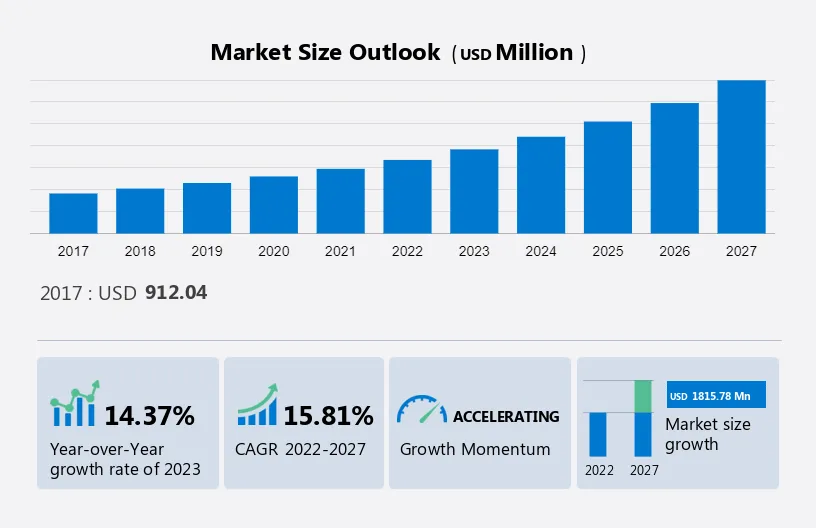Cryptocurrencies, the digital frontier of finance, continues to reshape the investment landscape. In this dynamic environment, staying ahead requires knowledge, and that’s where we come in. Let’s explore the top eight cryptocurrencies that could redefine your investment strategy in 2024.
- Bitcoin (BTC): Leading the Pack
Bitcoin, the pioneer of cryptocurrencies, stands as the undisputed leader. Its longevity, high market cap, and widespread acceptance make it a go-to investment for many. Notably, recent Securities and Exchange Commission (SEC) approvals for spot Bitcoin exchange-traded funds (ETFs) by industry giants like BlackRock and Fidelity mark a significant milestone.
However, the volatile nature of Bitcoin demands caution, with prices fluctuating significantly, challenging assumptions about its role as an inflation hedge.
- Ethereum (ETH): Beyond Boundaries
Ethereum, often considered the silver to Bitcoin’s gold, has carved its niche with unique blockchain technology. Despite being the second-largest cryptocurrency, Ethereum’s recent upgrades, including “The Merge,” offer scalability, cost reduction, and security enhancements.

Traditional companies like Fidelity are acknowledging its potential, setting the stage for possible SEC-approved spot Ethereum ETFs. However, Ethereum faces challenges such as slow transaction speeds and high gas fees, issues the platform aims to address with upcoming upgrades.
- BNB (BNB): Stability Amidst Volatility
Binance Coin, now BNB, asserts its stability, backed by the success of the world’s largest cryptocurrency exchange, Binance. Despite regulatory vulnerabilities, BNB’s coin burn strategy and Binance’s proactive role in stabilizing the crypto industry contribute to its allure.
Regulatory scrutiny, exemplified by a SEC investigation and subsequent fines, poses risks, emphasizing the need for careful consideration.
- Cardano (ADA): Efficiency in a Compact Package
Cardano’s appeal lies in its smaller ecological footprint, offering faster and cheaper transactions compared to larger networks like Bitcoin. With smart contract deployment and recent upgrades like the Vasil hard fork, Cardano aims to enhance scalability and functionality.
While it positions itself as a Web3 network with initiatives like AdaSwap, the lower adoption rate remains a potential concern for investors.
- Polygon (MATIC): Scaling Ethereum’s Heights
Born from Ethereum’s ecosystem, Polygon addresses scalability issues, presenting itself as a layer-two solution. Backed by Binance and Coinbase, Polygon’s zkEVM promises seamless integration with existing smart contracts, enhancing transaction speed and verification.

However, potential competition from future Ethereum improvements may challenge Polygon’s unique selling proposition.
- Terra 2.0 (LUNA): Stability Through Evolution
Terra 2.0 emerges from the ashes of Terra Classic, introducing stability through a new blockchain without an algorithmic stablecoin. The move aims to stabilize the Terra ecosystem, offering redemption to investors affected by the earlier crash.
Despite controversy and uncertainties, Terra 2.0 ventures into uncharted territory, offering potential rewards for risk-tolerant investors.
- Avalanche (AVAX): A New Frontier
Avalanche, a relative newcomer, positions itself as a foundational blockchain with scalability at its core. Founded as an Ethereum competitor, its ability to handle 6,500 transactions per second sets it apart.
However, the absence of a track record and the inherently risky nature of a short history present challenges for risk-averse investors.
- Chainlink (LINK): Bridging Realities
Chainlink’s decentralized oracle network facilitates secure interactions between blockchains and external data, backed by a strategic partnership with Google. Its utility in creating alternative inflation indices showcases its potential.

Yet, Chainlink, like its counterparts, grapples with market volatility, emphasizing the importance of continuous market awareness.
Investment Advice:
In the fast-evolving world of cryptocurrencies, staying informed is key. Consider factors like longevity, track record, technology, and adoption rates when evaluating potential investments.
Remember, past performance doesn’t guarantee future results. Prioritize understanding transaction speed, associated fees, and real-world usability, especially if considering long-term investments.
Conclusion:
Cryptocurrencies, with their transformative potential, demand strategic and informed investment decisions. As you navigate this evolving landscape, the top eight cryptocurrencies for 2024 offer a diverse array of opportunities and risks.
Continuously educate yourself, stay attuned to market dynamics, and adapt your strategy to thrive in this dynamic space.
FAQ:
Investing in cryptocurrency involves speculation and risk. Here are answers to some frequently asked questions:
- Which is the best crypto to invest in right now?
- The best cryptocurrency depends on individual risk tolerance and goals. Bitcoin remains a popular choice due to its widespread use, while Chainlink offers potential value with notable partnerships.
2. Which crypto is best for the future?
- Predicting the future of cryptocurrencies is challenging, but those addressing current limitations, like Polygon, or showcasing unique features, like Chainlink, stand out as potential long-term winners.
3. Which crypto has the most potential?
- The potential of cryptocurrencies evolves rapidly. Chainlink, with its data-connecting capabilities, holds promise, but the landscape is dynamic, and continuous monitoring is crucial.
4. What cryptocurrency should a beginner invest in?
- Bitcoin is often considered a safer entry point for beginners due to its widespread acceptance and relatively stable performance compared to other cryptocurrencies.
Trending Questions:
What is the current market trend for cryptocurrencies?
The current market trend for cryptocurrencies is as follows:

- Bear Market Takes Hold: The cryptocurrency market is experiencing a bear market, which is a period of declining prices and negative sentiment.
- Resurging and Expanding Use Cases for NFTs: Non-fungible tokens (NFTs) are gaining popularity and expanding their use cases, with search interest in “non-fungible tokens” growing by over 800% during the last 5 years.
- Continuing Fallout from FTX Collapse: The collapse of the FTX cryptocurrency exchange has had a significant impact on the market, leading to increased regulation and scrutiny.
- Increasing Regulation of Cryptocurrency: Regulators and policymakers across the world are concerned about the inclusion of cryptocurrencies into the existing financial system, leading to increased regulation.
- Volatility in Market Capitalization: The cryptocurrency market is known for its extreme price volatility, with market capitalization varying significantly over time.
- Adoption of Blockchain Technology: The adoption of blockchain technology is increasing at a robust pace, with thousands of digital assets being introduced every week.
- Dominance of Bitcoin and Ethereum: Bitcoin and Ethereum continue to dominate the cryptocurrency market, with their market capitalizations comprising more than two-thirds of the crypto market.
- Positive Momentum: Despite the challenges, many cryptocurrency investors are optimistic about the market’s future and believe it is on track for new all-time highs.
What are the predictions for the future of cryptocurrencies?
Based on the search results, here are some predictions for the future of cryptocurrencies:
- Bitcoin Price: Some market analysts predict that Bitcoin could hit USD $100,000 by the end of 2024, while others say it can reach $60,000.
- Regulation: Governments and regulators are expected to continue to increase their scrutiny of cryptocurrencies, which could lead to more regulation.
- Adoption: Cryptocurrencies are expected to play an increasingly important role in diversifying investments and reshaping the global financial landscape.
- NFTs: Non-fungible tokens (NFTs) are expected to continue to gain popularity and expand their use cases.
- Blockchain Technology: The adoption of blockchain technology is expected to continue at a robust pace, with thousands of digital assets being introduced every week.
- Stablecoins: The market cap of stablecoins is expected to continue to grow.
- Ethereum: Ethereum is expected to outperform every mega-cap tech stock.
- Bitcoin Halving: Bitcoin is on track to experience its next halving event in May 2024, which could serve as a bullish catalyst for Bitcoin prices.
It’s important to note that these predictions are speculative and subject to change based on a variety of factors. Cryptocurrency investments are also inherently risky, and it’s important to do your own research and consult with a financial advisor before making any investment decisions.
What are the factors that could affect the future of cryptocurrencies?
Several factors could affect the future of cryptocurrencies, including:
- Regulation: Government regulation is a significant factor that could impact the future of cryptocurrencies. Increased regulatory scrutiny and the development of a clear regulatory framework may influence the market.

- Adoption and Acceptance: The widespread acceptance and adoption of cryptocurrencies among consumers and businesses will play a crucial role in shaping their future.
- Market Sentiment and Volatility: User sentiments, media hype, and market volatility can significantly influence the cryptocurrency landscape.
- Technological Advancements: The development of new technologies to address the limitations and challenges faced by cryptocurrencies, such as security and scalability, will be a key factor in their future success.
- Institutional Investment: The entry of institutional money into the cryptocurrency market could bring about significant changes and impact the future of cryptocurrencies.
- Use Cases and Utility: The expansion of use cases and the utility of cryptocurrencies, including the development of decentralized finance (DeFi) and non-fungible tokens (NFTs), will be important in determining their future relevance.
- Market Infrastructure: The development and adoption of blockchain technology, which underpins cryptocurrencies, could have a lasting impact on the future of financial transactions and market infrastructure.
These factors, among others, will collectively shape the future of cryptocurrencies, and it’s important to consider them when evaluating the potential trajectory of the market.
1 thought on “Top 8 Cryptocurrencies Investments for 2024 That Will Supercharge Your Portfolio”